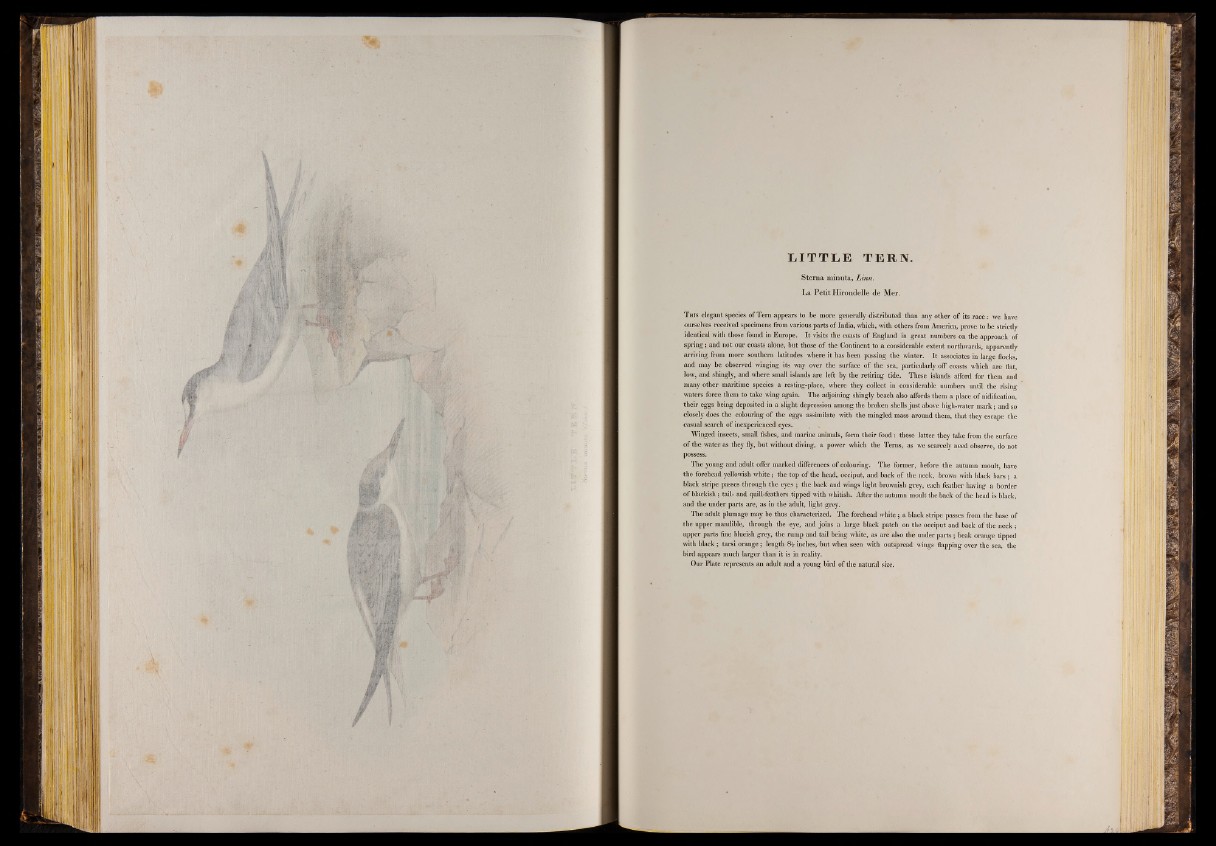
L IT T L E TERN.
Sterna minuta, Linn.
La Petit Hirondelle de Mer.
T his elegant species of Tern appears to be more generally distributed than any other of its race: we have
ourselves received specimens from various parts of India, which, with others from America, prove to be strictly
identical with those found in Europe. It visits the coasts of England in great numbers on the approach of
spring; and not our coasts alone, but those of the Continent to a considerable extent northwards, apparently
arriving from more southern latitudes where it has been passing the winter. It associates in large flocks,
and may be observed winging its way over the surface of the sea, particularly off coasts which are flat,
low, and shingly, and where small islands are left by the retiring tide. These islands afford for them and
many other maritime species a resting-place, where they collect in considerable numbers until the rising
waters force them to take wing again. The adjoining shingly beach also affords them a place of nidification,
their eggs being deposited in a slight depression among the broken shells just above high-water mark; and so
closely does the colouring of the eggs assimilate with the mingled mass around them, that they escape the
casual search of inexperienced eyes.
Winged insects, small fishes, and marine animals, form their food: these latter they take from the surface
of the water as they fly, but without diving, a power which the Terns, as we scarcely need observe, do not
possess.
The young and adult offer marked differences of colouring. The former, before the autumn moult, have
the forehead yellowish white; the top of the head, occiput, and back of the neck, brown with black bars ; a
black stripe passes through the eyes ; the back and wings light brownish grey, each feather having a border
of blackish; tail- and quill-feathers tipped with whitish. After the autumn moult the back of the head is black,
and the under parts are, as in the adult, light grey.
The adult plumage may be thus characterized. The forehead white; a black stripe passes from the base of
the upper mandible, through the eye, and joins a large black patch on the occiput and back of the neck 5
upper parts fine blueish grey, the rump and tail being white, as are also the under parts; beak orange tipped
with black; tarsi orange; length 8£ inches^ 'but when seen with outspread wings flapping over the sea, the
bird appears much larger than it is in reality.
Our Plate represents an adult and a young bird of the natural size.